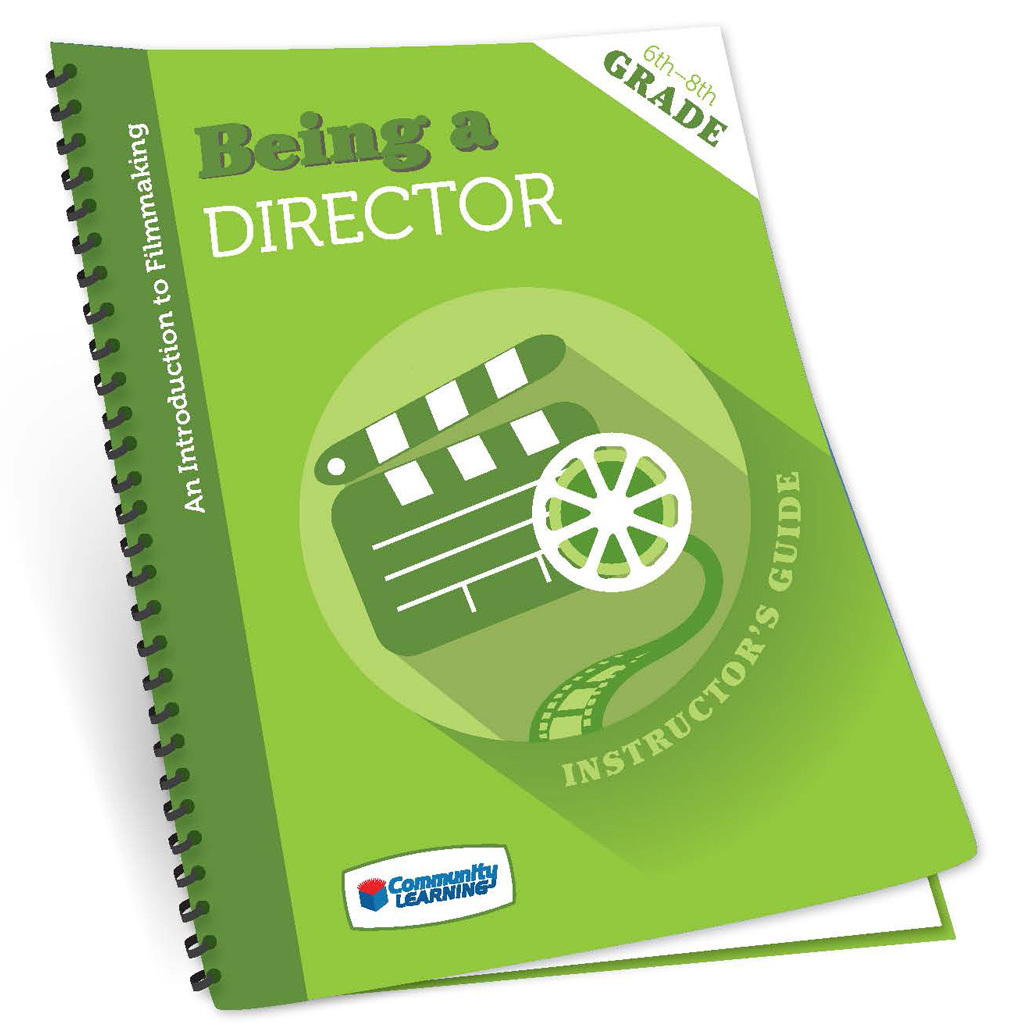Introduction to Filmmaking Tutorial
2nd Jan 2023
Welcome to
Being a Director! This course builds upon the lessons students learned in the Being a Screenwriter  courses to teach the necessary skills for directing and creating a one-of-a-kind movie masterpiece.
courses to teach the necessary skills for directing and creating a one-of-a-kind movie masterpiece.
One of the most important things to understand about the film making process is just how much effort goes into creating a film. In the next ten weeks, your students will get a taste of acting, set design, costume design, cinematography, editing, and more. While their in-class reading and activity will be structured around thinking like a director and learning to turn their screenplays into film, the shooting and editing of their films will be the most time-consuming part of the film making process and will need to be done in teams since one student cannot direct, act, film, and edit her or his film all at one time.
Tips, hints, and just plain great ideas!
|
|
Lesson 1 – Places Everyone: The Role of a Film Director
In this lesson, you’ll help your students understand the role of a director. No doubt that they’ve probably heard the word “director” before, but it will be your task to help them understand what it means. To help students get a feel for how directors affect a film, you’ll play a game today that asks students to look for distinctions between the styles of different directors. Prepare for this course by making sure that your classroom provides a comfortable space where students will feel safe and respected as learners and directors. It will help if you have pre-screened the video clips that you will be showing in this course. |
|
|
Lesson 2 – Film as Art: Learning to Think Cinematically
In this lesson, students will learn about mise-en-scène,an important aspect of film making borne out of the earliest days of the medium when French filmmakers were first learning to use film technology to tell stories. It's very important for students to understand that everything in the scene must convey something to the audience. |
|
|
Lesson 3 – Movie Stars: Casting and Working with Actors
In this lesson students will familiarize themselves with the members of a film making crew who bring the movie’s characters to life: actors. Throughout the production phase of a movie, actors and directors work closely together to interpret a script and turn the words written in a screenplay into a believable story. |
|
|
Lesson 4 – Take One: Shooting Your Film
In today’s lesson, students begin the most important (and most time-consuming) portion of their movie projects: shooting their films. To do this, they first learn about “shots,” the small video clips that are edited together to make a scene in a movie. To do so, a director and her/his team set up their cameras, lights, sound equipment, etc. They put their sets, props, and actors where they want them. |
|
Lesson 5 – Your Best Shot: Cinematic Techniques
This lesson will add to what students learned in the previous lesson regarding cinematography by discussing another important element of shooting movies: camera angles. There are many camera angles to consider but in these activities you'll focus on these: Establishing shot, Long shot, Medium shot, Close-up and Extreme close-up. |
|
|
Lesson 6 – Bright Lights: Storytelling with Light and Color
This lesson also adds some new tools to their cinematography repertoire that they can continue adding to their shot list. specifically focusing on lighting. As you help your students learn, any lighting in a movie is placed intentionally and has an important effect on the viewer. |
|
|
|
Lesson 7 – Invisible Art: Editing Your Movie In this lesson your students will begin to learn to edit their own movies. You’ll demonstrate to your students the three most basic features of any editing software: importing footage, adding footage to a sequence, and adding transitions. Included are instructions for performing these tasks in Windows Movie Maker and Apple’s iMovie. |
|
Lesson 8 – Guiding Your Audience: Storytelling through Editing
In this lesson students learn about the power of transitions in films. Transitions play two roles in the editing process, both a mechanical role in the physical structure of a film when it was physically cut between scenes and the effects help the viewer understand how the story is moving between shots much like transitions in a written story or essay. |
|
|
|
Lesson 9 – Finishing Touches: Harnessing the Power of Music
In today’s lesson students add some finishing touches to their films by working on their movies’ sound.This is the final step in the process of making a movie,and your students have worked hard to get here. What started as a brainstorm has now taken shape into a tangible product. With just one more step, their movies will be complete! |
|
Lesson 10 – Rolling Out the Red Carpet: The Movie Premier In this lesson, you will celebrate with your students and watch their final films! This is a big day. To create your own film from scratch is no easy task, and it is certainly an accomplishment to rejoice in. To celebrate, your students will take part in their own movie premiere. The movie premiere is broken into two parts: 1) a red carpet Q&A with the filmmakers and 2) the screening of their films. |
